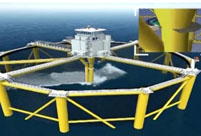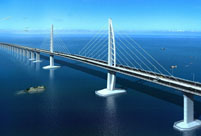


China has a clear plan to provide sea launches for commercial payloads to be carried by Long March rockets, according to an aerospace official.
Tang Yagang, vice head of the aerospace division of the No.1 institute of the China Aerospace Science and Technology Corporation (CASTC), said that the technology is not difficult and a sea launch platform can be built based on modifying 10,000-tonne freighters.
China will use solid carrier rockets which rely less on launch facilities and feature mature technology, Tang said, adding that key technology for the carrier rockets will be tested at sea this year and the service is expected to be available for international users in 2018.
At that time, Long March launch vehicles will be able to send satellites weighing 500 kilograms to a 500-kilometer-high sun-synchronous orbit with an inclination of zero to ten degrees, Tang said.
Countries in the equator region have growing needs for launching near-equatorial and low-inclination satellites, said Fu Zhiheng, deputy general manager of China Great Wall Industry Corporation, affiliated to the CASTC.
"The closer to the equator we launch a satellite, the less carrying capacity it will lose, and the lower the cost will be," Fu said, adding that space powers are competing to develop near-equatorial sea launches.
Currently, Long March carrier rockets have provided 60 commercial launches for domestic and international users, Fu said.
 Magnificent view of Nansha Islands in South China Sea
Magnificent view of Nansha Islands in South China Sea Aerial view shows scenery in Hong Kong
Aerial view shows scenery in Hong Kong China builds world’s first offshore fish farm
China builds world’s first offshore fish farm A Foreigner's Chinese Dream and Love for China
A Foreigner's Chinese Dream and Love for China 5,000-year-old Chinese beer recipe goes down a storm in US
5,000-year-old Chinese beer recipe goes down a storm in US World's first driverless rail transit system unveiled in Hunan
World's first driverless rail transit system unveiled in Hunan World's largest cluster of Miao villages in Guizhou
World's largest cluster of Miao villages in Guizhou Daily life in Kashgar, China's Xinjiang
Daily life in Kashgar, China's Xinjiang Top 10 Chinese tech and engineering marvels
Top 10 Chinese tech and engineering marvels Top 10 most sustainable cities in China
Top 10 most sustainable cities in China Top 10 European patent applicants in 2016
Top 10 European patent applicants in 2016 The power of 'She' in China
The power of 'She' in China Seven most beautiful art museums in China
Seven most beautiful art museums in China China can rethink stance on Sikkim, Bhutan
China can rethink stance on Sikkim, Bhutan As US turns inward, Chinese public have divergent views on taking global leader role
As US turns inward, Chinese public have divergent views on taking global leader role  Tsinghua offers rent-free apt to disabled student so mother can look after him
Tsinghua offers rent-free apt to disabled student so mother can look after him  Provinces, FTZs follow central govt in further opening up to foreign investors
Provinces, FTZs follow central govt in further opening up to foreign investorsDay|Week